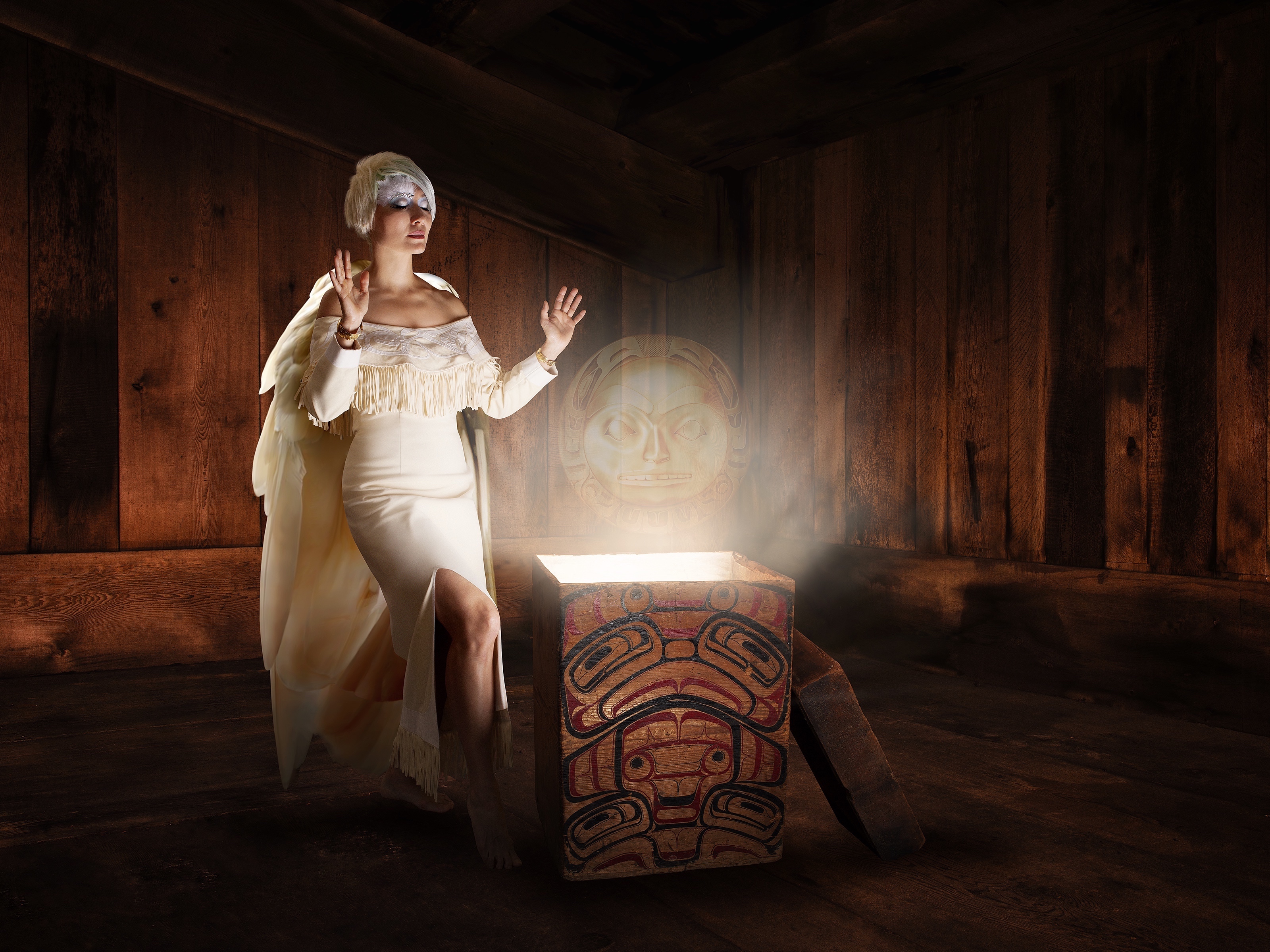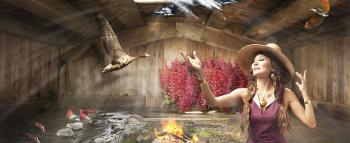Image Caption
Summary
Windspeaker.com Contributor

If supernatural beings existed today, Plastic Woman would be one of them.
The figure, consisting entirely of plastics that were found on the southern beaches of a remote part of Haida Gwaii, is included in the contemporary section of the exhibit “Out of Concealment”. It opens at the Bill Reid Gallery in Vancouver on Oct. 23.
“Plastic Woman would be a representation of the extent of plastic we have in today’s society and the impact it’s having on marine life,” said multi-media artist Terri-Lynn Williams-Davidson, whose work makes up the exhibit.
The Gaagyals KiiGawaay artist says she was moved to make the sculpture after a trip to the Gwaii Hanaas National Park Reserve where she found the plastics washed up on the beach, some still with their labels identifying them from Asia, British Columbia or other parts of Canada.
Plastic Woman is one of a handful of sculptural pieces added to the “Out of Concealment” exhibit, which premiered in 2017 and ran for six months at the Haida Gwaii Museum. While that exhibit contained 43 pieces, the smaller Bill Reid Gallery is displaying half that number.
The exhibit gets its title from the Haida oral histories, with the original name for Haida Gwaii translated to “the islands brought out of concealment from the supernatural beings,” explainws Williams-Davidson.
“The title is a play on the early part of our history in that these supernatural beings, which are not really well known to society, are being brought out for people to see and learn about,” she said.
Williams-Davidson, who is also a Canadian Aboriginal Music Award winner, began delving into her culture’s supernatural beings as the theme for her third album.
“To write about it I needed to know how they were and what they looked like. That’s what led to the exhibit,” she said. “Everything in the Haida world view has a supernatural existence or presence.”
“Out of Concealment” includes two pieces with motion sensors that trigger music. The music, which comes from Williams-Davidson’s album “Grizzly Bear Town,” blends the traditional with jazz and rock. Williams-Davidson worked with Bill Henderson and Claire Lawrence from the rock band Chilliwack.
“Grizzly Bear Town” is one of the music videos that will be shown at the exhibit. It explores the impact of colonialism and what Williams-Davidson believes is a step forward in “the colonial encounter,” making both the Indigenous and settler experiences a good one.
Williams-Davidson depicts female supernatural beings through photographic collages. She is the subject in every photo which, she says, chronicles her transformation and understanding of what the supernatural beings looked like, something that was rarely captured in the oral narratives, and what their lessons are.
“I hope that people will not see me, but will see the supernatural beings and the Haida Gwaii, because these beings are a personification of the supernatural beings,” she said.
“In the oral narrative, there was an era where the earth was only occupied by supernatural beings. Then human beings came in and then those supernatural beings actually became part of the landscape.”
Williams-Davidson, who is doing her masters and Ph.D. in Indigenous law, says that in examining Indigenous beliefs around the world, she has come to realize that it is widely held that supernatural beings are now part of the landscape.
The exhibition also draws on work undertaken by Williams-Davidson’s artist husband Robert Davidson.
“It was very much a working together project where I would find pieces of his art that were an appropriate fit of the supernatural beings and I did that because artists such as him … have depicted supernatural beings but in a very abstract way and I wanted people to make the link between how they’ve typically seen supernatural beings in abstract art, northwest coast, and how you would actually see the being if you were to see her today,” said Williams-Davidson.
In particular, she draws on Davidson’s image of Octopus Woman, which he called “Occupied,” a play on words stressing the demand made of Aboriginal people that they prove title to all their land.
For Williams-Davidson, who is also an environmental lawyer, it was an opportunity to explore the notion of Aboriginal and Crown title and how Indigenous laws exist but are not recognized as such.
“So that whole piece is an exploration of the fact that once you recognize an Indigenous law, you can’t not see it in the same way that his play on the positive and negative space allows you to. All of a sudden you do a shift in your mind and all of a sudden you can see something you wouldn’t have seen unless you knew it was there in the first place,” she said.
“Out of Concealment” is performance art, says Williams-Davidson, and draws upon ceremonies from the northwest coast “where we put on a mask and we become that being.” The Haida word for mask means to imitate.
For those who visit the exhibit, Williams-Davidson wants people to come away with a basic understanding.
“I hope that they will realize that we are all one race, the human race and that we are all responsible and that we all need to find a way to live with the earth and with each other,” she said.
“Out of Concealment” runs from Oct. 23 to April 5, 2020 at the Bill Reid Gallery of Northwest Coast Art in downtown Vancouver.

